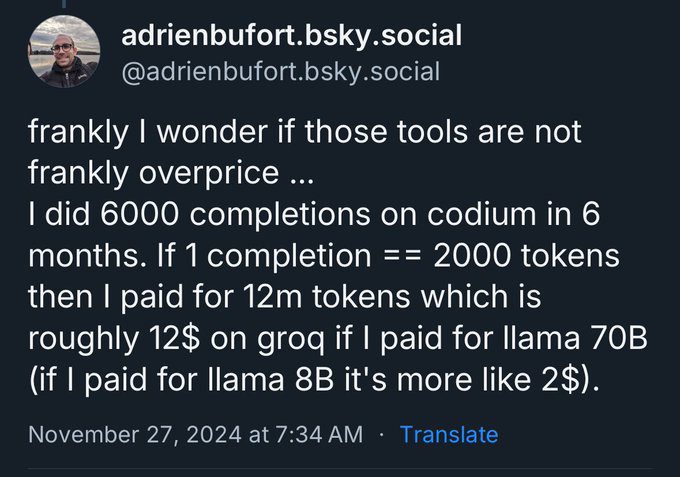The Financial Struggles of Developer Tools Companies
Developer tools companies, even massive ones like GitLab or HashiCorp, often find themselves grappling with financial losses. The primary reason for this is the challenging pricing model of $20/month for an all-you-can-use coding LLM (Large Language Model). This pricing strategy makes it difficult for companies to turn a profit. When developers find a tool overpriced, they either move to a more affordable option or build their own solutions.
The Impact of AI on Developer Tools
The integration of AI in developer tools has been a double-edged sword. While AI-powered coding assistants like GitHub Copilot and its competitors such as Codeium and Anysphere have revolutionized coding efficiency, they have also introduced new financial challenges. For instance, Codeium raised $150M at a $1.25B valuation, highlighting the growing demand for AI-powered coding assistants. However, the cost of maintaining and improving these AI models can be exorbitant, further straining the financial health of these companies.
The Shift Towards Cloud-Based Development Environments
Companies like Coder are making strides in moving development environments to the cloud, offering preconfigured, enterprise-focused cloud environments for software development. This shift is driven by the need for centralized control, governance, and security. According to Gartner, by 2025, 30% of large enterprises will use cloud development environments to streamline development workflows and enable better manageability. Coder’s open-source software has around 1.2 million monthly active users, and its revenue doubled in 2023, with expectations to double again in 2024. Coder’s new funding round of $35 million further underscores the industry’s shift towards cloud-based solutions.
The Role of Low-Code/No-Code Platforms
Low-code/no-code (LC/NC) platforms have gained traction as businesses seek faster and more accessible development solutions. However, these platforms face scalability challenges, especially when integrating AI capabilities. As highlighted in Low-Code, No-Code Platforms Fail When It’s Time to Scale, LC/NC platforms must adapt to the AI-driven changes in the developer landscape. Companies like Bubble, Webflow, and Toddle are integrating AI to simplify app development and infrastructure management, but the cost of AI integration can be prohibitive.
The Competitive Landscape and Developer Preferences
Developers are known for their preference for open-source solutions and their tendency to switch tools if they find something overpriced. This behavior poses a significant challenge for proprietary software companies. The ongoing tension between open-source and proprietary software is evident in the struggles of companies like HashiCorp and the rise of open-source alternatives. The article The Eternal Struggle Between Open Source and Proprietary Software discusses the evolving nature of open-source licensing and business models, highlighting the potential for open-source software to disrupt various industries.
The Future of Developer Tools and AI Integration
As AI continues to transform the software development landscape, companies must find sustainable pricing models for their AI-powered features. The article Building a Viable Pricing Model for Generative AI Features Could Be Challenging explores the various approaches and challenges in pricing AI features. Companies like Box, Microsoft, and Nylas are integrating generative AI into their existing software products, but the cost of maintaining these AI models remains a significant hurdle.
Related Articles
- How AI is Transforming the Way Developers Work with GitHub Copilot
- 8 No-Code Tools for Startups Embracing the Future of Technology and AI
- Top 10 Web Development Challenges with Powerful Solutions
- Top AI Tools for Developers: Enhancing Coding Efficiency and Innovation
- Top 5 AI Developer Tools
Looking for Travel Inspiration?
Explore Textify’s AI membership
Need a Chart? Explore the world’s largest Charts database
